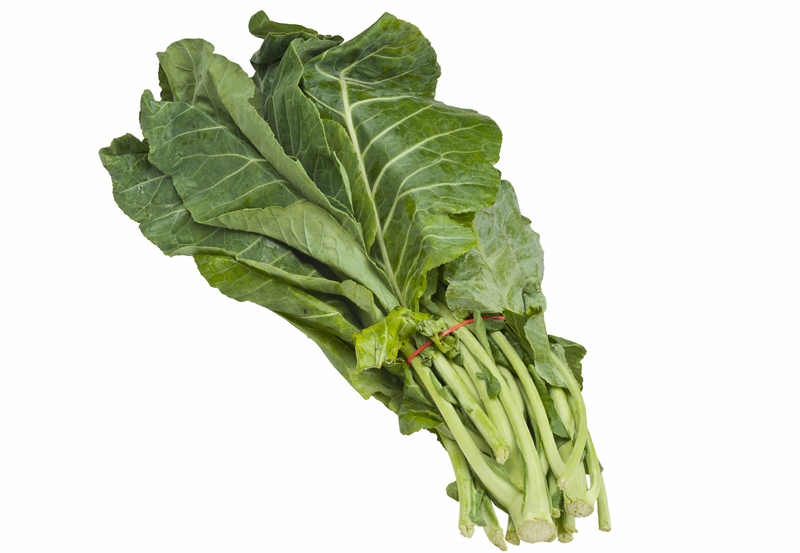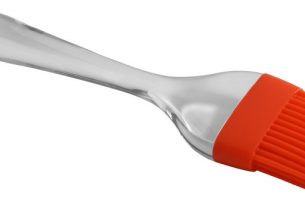Leafy green vegetables are good for the health with high contents of fiber, vitamins, and minerals and yet have low calories. You would have surely heard about how incredible they can be. Regardless of your diet, they are often considered to be a food choice that is not limited. It is very useful to know how you should incorporate them into your diets.
You are likely to come across both mustard greens and collard greens if you are on this kind of mission. You might be wondering how mustard greens are different from collard greens. The major difference between collard and mustard greens is that collard greens belong to the family of cabbage while mustard greens can be considered to be an herb. They have vastly different flavors and they also have different levels of minerals and vitamins.
They are only similar in that they have a green color, plenty of high nutritional contents, and also having leaves. Before you select an option to eat, it is not a bad idea to be familiar with the differences between the two greens which is primarily in their flavor profiles. What we will check out in this guide will allow you to have an idea about those things you should know about these two greens.
What Are Mustard Greens
These belong to the family of brassica, just like collard greens that we will consider after this one. Mustard greens can be considered to be an herb whose flavor is very powerful. This is an indicator that the nutritional profile will be very powerful. They start as seeds that everyone knows best for having the potential to make people’s favorite condiment; mustard. Mustard greens can be eaten at every level of growth and they are extremely healthy as well as very tasty.
A lot of people also like to sprout the seeds and eat them just like some other sprouts like broccoli sprouts or alfalfa. The leaves become larger as the seeds grow longer. You can easily grow them by yourself but you may have a very good grocery store in the place you live where you can easily find greens or sprouts.
What Are Collard Greens
Known to be a member of the family of brassica alongside Swiss chard, cabbage, and kale, collard are thick large leafy greens. It got the name “collard” from the Greek word called “colewort” that has a meaning ‘wild cabbage.’ Collard greens can grow tall to about 2 feet but as they become larger, they become tougher.
There are popularly available all year-round in almost all supermarkets. It is best to buy a bunch of collard greens that are rich and deep green without holes or dried edges. Almost all greens grown conventionally are frequently sprayed with insecticides. It is a wonderful time to put an investment in them if you find organic ones.
If not, ensure the leaves are well washed possibly with a vinegar-water solution. Because it has dense leaves, it will respond positively to wash, unlike spinach that is their cousin which wilts when it comes in contact with water even in a little amount.
Health Comparison of Mustard Greens to Collard Greens
They are both very nutritional when added to juices, sautés, or salads. Let’s check below for some of their comparison in vitamins and grams.
| Per 1 (one) Cup, Chopped Raw | Mustard Greens | Collard Greens | ||
| Grams | Percent Daily Value | Grams | Percent Daily Value | |
| Fat | 0.1 | 0.2 | ||
| Calories | 14.6 | 10.8 | ||
| Carbohydrates | 2.7 | 2.0 | ||
| Sugar | 0.9 | 0.2 | ||
| Fiber | 1.8 | 1.3 | ||
| Protein | 1.5 | 0.9 | ||
| Vitamin K | 348% | 230% | ||
| Vitamin A | 118% | 48% | ||
| Vitamin C | 65% | 21% | ||
| (Folate) Vitamin B9 | 26% | 15% | ||
| Manganese | 13% | 5% | ||
| Calcium | 6% | 5% | ||
The chart above does not contain all the details, but it does go a very long way to show you the most impressive nutrients. Vitamin K is very important to the health of the bone while vitamin A maintains youthful eyes and skin. Vitamin C protects and improves the immune system while folate helps to keep the bones and blood health as well as helps in aging healthily from birth into maturity.
Apart from minerals and vitamins, there are also content of antioxidants and phytonutrients. The micronutrients will help to bolster the immune system, disease the risk of diseases, and fight off harmful germs and bacteria.
Collard greens have compounds that are rich in sulfur referred to as glucosinolates, a scientific means to say that they are linked to having different health benefits including prevention of cancer and basic support to the immune system.
Researches have also shown that mustard greens help to prevent cancer and they also help to lower oxidative stress. Mustard greens also help to defend the body against free radicals which are very dangerous to the body. The plant will also help you to keep your internal self hygienic and clean because chlorophyll is generally rich in green plants.
Another common, highly beneficial constituent of both greens and other greens is glutathione, a kind of peptide that allows the body to process fat efficiently. It also helps the liver to function well and it is closely linked when you want to consider living a life that is healthy and long.

How to Use Mustard Greens and Collard Greens
Mustard greens and collard greens have different flavors, but they are usually used in similar preparation styles. Check below for some options you have:
Cooking with Mustard Greens and Collard Greens
- Chop the greens finely and then add them to tofu/egg scramble or omelet.
- Either chop them to add to your soup or blend them after you have cooked to get a more creamy consistency.
- Saute them with veggies of your choice and sesame oil, layering it over your rice meal.
- Steam them and then drizzle or drench them with garlic olive oil or garlic butter.
- Chop them finely and then add to vegetable-based sauces, ground meat or its alternatives, or burger patties.
- Make creamed collard or mustard greens instead of trying to make creamed spinach.
- Chop them up and mist them with a spray of olive oil and then season it inside your oven like you will do kale chips.
- Add them to flavorful and rich African curry meals or to boost your gravy nutritionally.
- Make yourself a southern meal by sautéing the greens with bacon and onion.
Eating Mustard Greens and Collard Greens Raw
- First, chop them and add them to a flavorful, beautiful garden salad that is dressed with citrus.
- Blend or juice them into a morning smoothie.
- Get a little spice by adding your mustard greens on a sandwich or wrap flour wrap to get a very big collard green.
- On burgers or in tacos, swap your iceberg lettuce by chopping up mustard and collard greens to ensure that are easily bitten into.
- Thinly slice with carrots and some peppers to make spring rolls.
- Blend the greens in your food processor with sour cream or cream cheese and roasted garlic to get some delicious spread or dip.
- Use greens to top crackers appetizers and favorite olive or cheese spread as you desire.
Related Questions
Are collard greens healthier than spinach or kale?
You can never go wrong by eating leafy green vegetables but both kale and spinach do better than collard greens when you consider a lot of areas. You can, however, incorporate all the three of them into your stir-fries, salads, or juices.
Can you eat raw mustard greens?
Mustard greens can be eaten raw at almost all the stages of their cycle. You will get mustard from mustard seeds, you may get mustard sprouts by sprouting them or allow them to continually grow until they have larger leaves before you add them to sandwiches and salads. You may also juice them to make peppery punch.
How do you get the bitterness out of mustard greens?
The best method to cut the bitterness of your green leafy vegetable is by adding an acid or a salt. Season your greens with salty condiments like soy sauce or miso. You can even season them with salt itself. In case you want to eat them raw, squeeze some fresh lime or lemon on them.
Can you substitute mustard greens for collard greens and vice versa?
Mustard greens and collard greens do not have the same flavor, so you cannot substitute them for each other. Recipes that need collard greens can still have spinach, kale, or chard as a substitute. For mustard greens, try radish sprouts because it has the closest flavor to it.
Do mustard greens and collard greens taste the same?
Mustard greens could be considered to be spicy, ensure you use them lightly when adding to salads or when using them to cook. Depending on their age and how they have been grown, their potency will vary. You are to take samples before you decide on the amount you will use for your meal.
Collard greens do not taste like fiery greens associated with mustard seeds. Collard greens being a part of the family of cabbage taste much like other types of leafy salad greens like kale. Collard greens usually have a mild flavor though they often become quite bitter when they age. They work excellently when sautéed or chopped raw for your salads.


